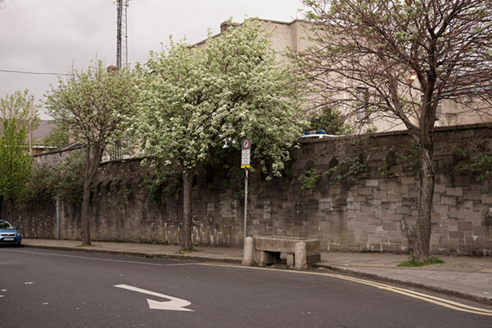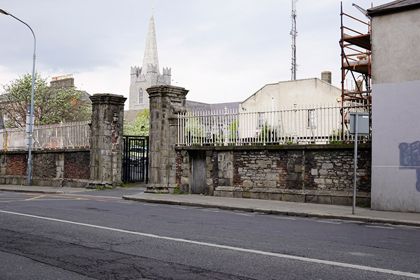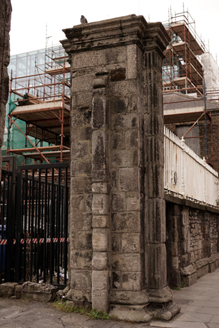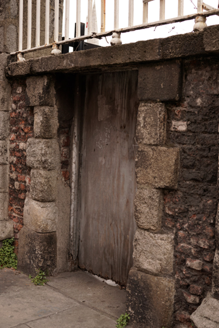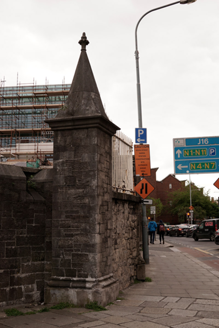Survey Data
Reg No
50110026
Rating
Regional
Categories of Special Interest
Architectural, Artistic, Historical, Technical
Previous Name
Palace of St Sepulchre
Original Use
Gates/railings/walls
In Use As
Gates/railings/walls
Date
1700 - 1710
Coordinates
315270, 233383
Date Recorded
27/04/2017
Date Updated
--/--/--
Description
Gateway, erected c. 1705, and boundary wall with railings of 1825, to former archiepiscopal palace, later military barracks and police/Garda station, and part of western boundary forming enclosure to Marsh's Library to northwest. Gateway comprises granite cross-plan piers with moulded cornice and base, having full-height fluted Doric pilasters to front and rear faces. Lower pilasters to gate sides with moulded tops. Similarly high but more substantial and deeper pilasters to railing sides. Each having moulded base on dressed limestone plinth, moulded cornice, blocking course and heavy scroll bracket. Flanking walling comprises dressed limestone piers with intervening panels of rubble limestone with ends of brick and having cut limestone coping and moulded limestone coping over dressed limestone plinth. Square-headed pedestrian doorway to east part, with granite block-and-start surround and recent timber door. Wrought-iron railings atop wall, having decorative cast-iron posts with urn finials. Snecked limestone boundary wall to west boundary of site, having crenellated coping to external half and higher internal face and cut stone coping to internal half. Square-plan piers at junction of Kevin Street and St. Patrick's Close and at junction of boundaries to Marsh's Library and St. Patrick's Cathedral graveyard, with moulded bases and cornices and spired cut limestone caps with fleur-de-lis finials. Similar, but more detailed, piers mark entrance to St. Patrick's Close at junction with Patrick Street. Western boundary wall rises in height along middle section and thereafter is lower and forms boundary to front of Marsh's Library, ending at graveyard to St. Patrick's Cathedral.
Appraisal
This elegant boundary to the former archiepiscopal palace of St. Sepulchre is a fitting introduction to this highly significant complex. The fluted granite gate piers make a striking contribution to the streetscape and are thought to date to the time of William King, who moved into the bishop's palace in 1703. The high-quality detailing provides a pleasing tonal and textural contrast to the later brick and rubble limestone walls that were erected by the Wide Streets Commissioners. The more substantial boundary wall to the west was built to the designs of Patrick Byrne in a Gothic style in the early nineteenth century.
